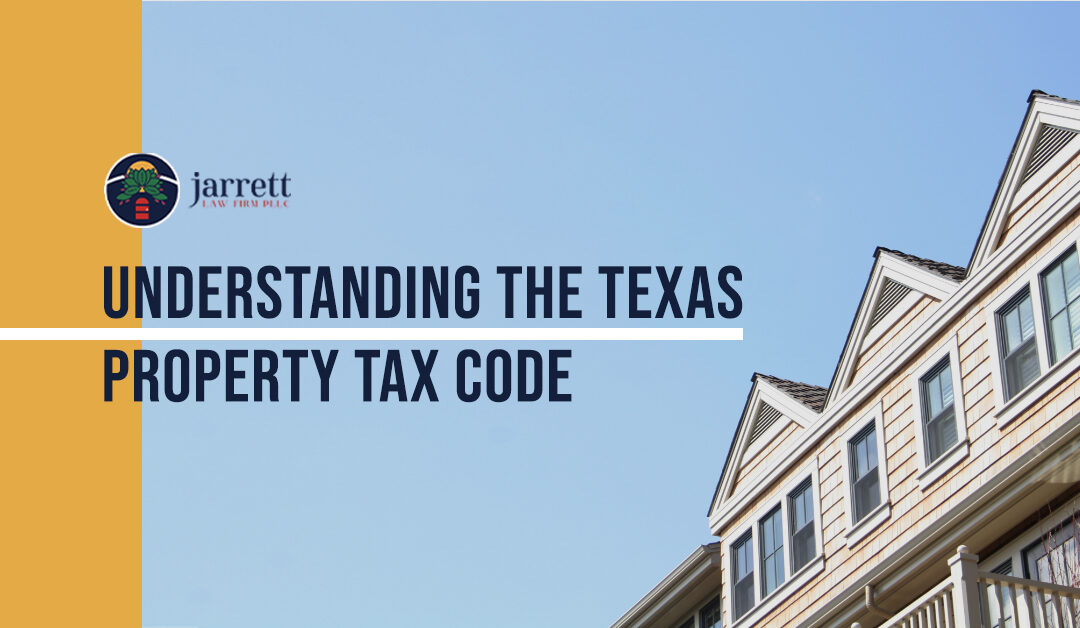Owning property in Texas means getting familiar with the state’s unique property tax code. It’s a system that affects every homeowner, but it doesn’t have to be confusing. The Texas Property Tax Code lays out the rules for how property taxes are calculated and collected within the state.
This blog post will break down the key elements of the code, helping you understand what it means for you and your property without the need for any legal jargon. Whether you’re a new homeowner or just looking to understand your yearly tax bill, this guide will give you the clarity you need.
Personal Property Tax Code Subtitle A
The “Personal Property Tax Code Subtitle A” in Texas sets the foundational framework and definitions for the state’s administration of personal property taxes. This tax code section outlines general principles such as the authority to tax personal property, the types of real and personal property subject to taxation, and the standard procedures and rules governing tax appraisals, exemptions, and assessments.
Furthermore, it includes key definitions that set the scope and language of the law, ensuring consistency and clarity in the interpretation of personal property tax statutes across Texas. By laying out these fundamental guidelines, Subtitle A serves as the basis for the state’s broader system of personal property taxation.
Relevant Code: Title 1, Subtitle A: General Provisions
Property Appraisal
Owning property in Texas means understanding the unique property tax code that governs the state. This code, defined in Texas law, lays out the rules for how property taxes are calculated, assessed, and collected.
What is an Appraisal District in Texas?
Appraisal Districts are the governmental bodies responsible for determining property value within their jurisdiction in Texas. They operate independently and work to ensure that the assessments are uniform and equal as per the state’s guidelines.
Each county in Texas has its own Appraisal District. They identify and appraise all taxable property within the county, following the rules set by the Texas Property Tax Code.
Their role is crucial in determining property value, directly affecting how much a property owner pays in taxes. Appraisal Districts must follow specific guidelines and timeframes, ensuring transparency and fairness in the process.
Appraisal Districts’ functions, organization, and operations are primarily outlined in the Texas Property Tax Code under:
- Title 1, Chapter 6: Local Administration
- Title 1, Chapter 6, Subchapter A: Provisions Generally Applicable to Appraisal Districts
- Title 1, Chapter 6, Subchapter B: Appraisal District Directors
- Title 1, Chapter 6, Subchapter C: Chief Appraisers and Appraisal Office
How Does Property Valuation Work?
Property valuation in Texas involves assessing the property’s worth using several methods. The primary approach is determining the market value, representing what the property would sell for in the open market.
For agricultural land, there are special considerations. Land may be appraised based on its capacity to produce agricultural products rather than its market value. This can result in a lower valuation and, subsequently, lower taxes.
Other factors such as location, size, use, and property condition also matter during the valuation. Appraisal Districts have trained appraisers who conduct these valuations, following strict state guidelines to ensure an unbiased and accurate assessment.
The methods used to assess property value, including market value and agricultural value, are addressed in:
- Title 1, Chapter 23: Appraisal Methods and Procedures
- Title 1, Chapter 23, Subchapter A: Appraisals Generally
- Title 1, Chapter 23, Subchapter B: Special Appraisal
- Title 1, Chapter 23, Subchapter C: Appraisal of Public Access Airport Property
Exemptions and Special Valuations
Several exemptions and special valuations in Texas can lower a property’s taxable value. These are provisions designed to support various types of property owners.
- Homestead Exemptions: Homeowners using their property as a primary residence may qualify for a homestead exemption, reducing the property’s taxable value.
- Exemptions for Seniors & Disabled: Individuals over 65 or disabled may qualify for additional exemptions, further lowering their property’s taxable value.
- Agricultural Land Valuations: As mentioned earlier, land used primarily for farming or ranching may be valued based on agricultural productivity rather than market value.
- Other Special Valuations: Other special valuations may be available for properties used for specific purposes, such as wildlife management.
Details about exemptions and special valuations, including homestead exemptions and exemptions for seniors, are found in:
- Title 1, Chapter 11: Taxable Property and Exemptions
- Title 1, Chapter 11, Subchapter B: Exemptions
- Title 1, Chapter 23, Subchapter B: Special Appraisal (for agricultural land)
Understanding the role of Appraisal Districts, property valuation methods, and exemptions is vital for any property owner in Texas. By being aware of these aspects of the property tax system, you can better navigate the complex landscape of property taxation.
Ensure the appraisal district taxes you fairly and take advantage of any exemptions or special valuations for which you may qualify.
Tax Rates and Calculations
Understanding how appraisal districts set tax rates and calculate your payment can help you know what to expect. Texas property tax code covers the answers to your questions.
Setting Tax Rates
In Texas, the tax rates are determined by local taxing units such as school districts, cities, and counties. These rates are influenced by several factors, including the budgetary needs of the taxing unit and the total value of taxable property within its jurisdiction.
Each taxing unit follows a public process to set its tax rate, which includes public hearings and official adoption by the governing body. This process ensures transparency and allows property owners to participate in the decision-making.
Relevant Code: Title 1, Chapter 26, Subchapter A: Calculation of Effective Tax Rates
Calculating Your Property Tax
Calculating property tax in Texas involves multiple steps:
- Determine Assessed Value: Appraisal districts assess the property’s value and apply any exemptions or special valuations.
- Apply Tax Rates: The assessed value is then multiplied by the tax rate set by each local taxing unit where the property is located.
- Calculate Total Tax: Summing the taxes for all the taxing units gives the total property tax bill.
For example, if a property has an assessed value of $200,000 and the combined tax rate from all taxing units is 2%, the total tax bill would be $4,000.
Relevant Code: Title 1, Chapter 26: Assessment
Paying Your Property Taxes
Property taxes in Texas are typically due by January 31 of the year following the tax year. Property owners can make a timely payment or pay in installments if they meet specific criteria.
Late payment of property taxes can result in penalties and interest, which are added to the amount owed. If taxes remain unpaid, the taxing unit may initiate legal action to collect the unpaid amount.
Different counties may offer additional payment options, and some may have programs to assist those with difficulty paying their taxes.
Relevant Code:
- Title 1, Chapter 31, Subchapter A: Payment of Taxes
- Title 1, Chapter 33, Subchapter A: Delinquency
Understanding how tax rates are set, how property tax is calculated, and the process for payment is essential for property owners in Texas. This information helps property owners plan effectively and participate in the local decision-making process affecting their tax obligations.
Protests and Appeals
Navigating property valuation in Texas may sometimes lead to disagreements between property owners and appraisal districts. Understanding how to effectively challenge an appraisal or seek recourse through a structured appeals process is essential to property ownership. In the “Protests and Appeals” section, we will explore the avenues available for those who believe their property’s valuation is inaccurate.
The process offers multiple layers of review and resolution, from filing an initial protest with the Appraisal Review Board to potentially pursuing legal action. Whether challenging the appraisal or seeking an appeal, knowing your rights and the steps involved ensures a fair and transparent experience in the Texas property tax system.
Challenging Your Appraisal
If you disagree with the appraised value of your property in Texas, you have the right to challenge it. Here’s a guide to the process:
- File a Protest: Complete the required form, usually “Notice of Protest,” and submit it to your county’s Appraisal Review Board (ARB) by the deadline mentioned in your appraisal notice.
- Prepare Your Case: Gather evidence that supports your claim, such as comparable sales data or information about your property’s condition.
- Attend the ARB Hearing: The ARB will schedule a hearing where you can present your case. You may represent yourself or have an agent represent you.
- ARB’s Decision: The ARB will make a decision and send you a written order. If you’re dissatisfied with the result, you may proceed to the next level of appeal.
Relevant Code:
- Title 1, Chapter 41, Subchapter A: Right of Protest
- Title 1, Chapter 41, Subchapter B: Protests to Appraisal Review Board
Appeals Process
If you are not satisfied with the ARB’s decision, Texas law provides several levels of judicial appeals, including:
- Binding Arbitration: This is a less formal process where an independent arbitrator will review the case and make a decision.
- District Court: You can file a lawsuit against the appraisal district in district court. Legal representation is usually advisable at this stage.
- State Office of Administrative Hearings (SOAH): In some cases, you may appeal to SOAH instead of going to court.
Each appeal option has specific procedures, deadlines, and associated costs. Careful consideration of which appeal route to take, possibly with legal counsel, is essential.
Relevant Code:
- Title 1, Chapter 41, Subchapter C: Appeals
- Title 1, Chapter 42: Judicial Review
The process of protesting and appealing a property’s appraised value in Texas involves several steps and options. Understanding these options, including the role of the Appraisal Review Board and the availability of arbitration or legal action, empowers property owners to assert their rights and seek a fair assessment of their property tax.
Our Experienced Real Estate Attorneys Can Help
Reading through the Texas property tax law can be challenging, especially when it comes to disputes over property valuation or understanding various exemptions.
At Jarrett Law, we are well-versed in these intricate legal matters and ready to assist you. Whether challenging an appraisal, filing a protest, or seeking an appeal, we’ll guide you through every step.
Our commitment to clear communication, legal excellence, and client satisfaction gives you the support you need to assert your rights and achieve the best possible outcome.
Reach out to our knowledgeable real estate attorneys today, and let us put our expertise to work for you.



Recent Comments